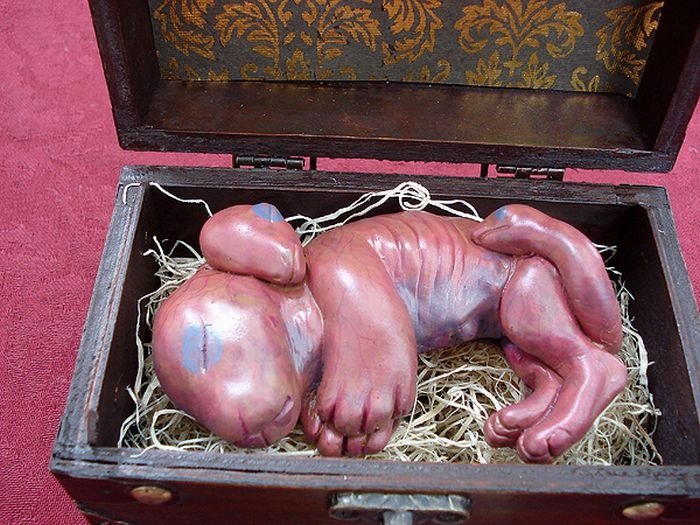|
|
Chimera Fetus Box
|
The Chimera finally was defeated by Bellerophon, with the help of Pegasus, at the command of King Iobates of Lycia. Since Pegasus could fly, Bellerophon shot the Chimera from the air, safe from her heads and breath. A scholiast to Homer adds that he finished her off by equipping his spear with a lump of lead that melted when exposed to the Chimera's fiery breath and consequently killed her, an image drawn from metalworking.
The Chimera was situated in foreign Lycia, but her representation in the arts was wholly Greek. An autonomous tradition, one that did not rely on the written word, was represented in the visual repertory of the Greek vase-painters. The Chimera first appears at an early stage in the proto-Corinthian pottery-painters' repertory, providing some of the earliest identifiable mythological scenes that can be recognized in Greek art. The Corinthian type is fixed, after some early hesitation, in the 670s BCE; the variations in the pictorial representations suggest to Marilyn Low Schmitt a multiple origin. The fascination with the monstrous devolved by the end of the seventh century into a decorative Chimera-motif in Corinth, while the motif of Bellerophon on Pegasus took on a separate existence alone. A separate Attic tradition, where the goats breathe fire and the animal's rear is serpent-like, begins with such confidence that Marilyn Low Schmitt is convinced there must be unrecognized earlier local prototypes. Two vase-painters employed the motif so consistently they are given the pseudonyms the Bellerophon Painter and the Chimaera Painter. A fire-breathing lioness was one of the earliest of solar and war deities in Ancient Egypt (representations from 3000 years prior to the Greek) and influences are feasible.
|
|









